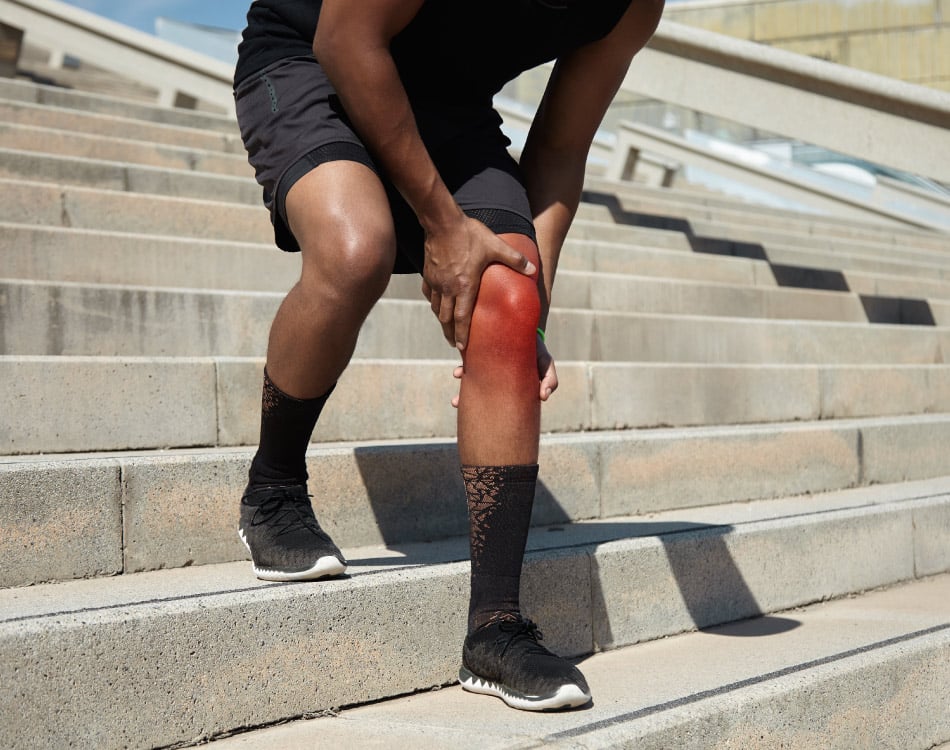Tendon injuries are a common problem in many sports but are highly prevalent in high-impact and repetitive activities like running.
Tendons are cord-like bands of tissue that connect muscles to bones. They are made of a tough, fibrous substance called collagen that can withstand significant force and tension.
However, despite their strength, these structures often experience some degree of degradation due to overuse, biomechanical imbalances and poor form or technique.
Other factors that can result in tendon injuries include exercise selection, training load, diet, movement speed, a lack of flexibility and mobility, and limb misalignments.
READ MORE | 5 ways you’re fast-tracking injury
Terrible tendinitis
Most tendon issues develop over time in the from of tendinitis due to chronic physical stress, especially when your body is not properly conditioned.
Tendinitis is caused by a combination of wear and tear, inflammation and poor healing mechanisms, and typically does not resolve on its own. Visible signs of tendinitis include swelling, redness, heat and soreness.
When you damage a tendon, either through direct trauma or wear and tear, some of the fibres break, rip or tear. This triggers an inflammatory response, which traps fluid in the area and releases chemicals that make the affected area extremely sensitive to pain. It also tends to tighten the surrounding muscles, which can affect other joint structures.
Scar tissue then starts to form. While this tissue is the same kind of protein fibre as the original tissue, it is laid down in various directions. These misaligned fibres make the structure weaker.
These structural changes to the tissue make the tendon more susceptible to more severe injuries, such as a complete tendon rupture, especially if you fail to perform the appropriate rehabilitation and continued strengthening.
READ MORE | 3 ways medium hyperbaric oxygen therapy benefits recovery from injury
A tendinosis diagnosis
Another common form of tendon trouble is tendinosis. This condition stems from tendon tissue degradation caused by cell death primarily due to a lack of sufficient nutrient delivery because of a lack of blood supply.
Chronically tight muscles place constant tension on the tendons to which they attach. The tendon then stiffens as it is held in a stretched position. This makes it harder to absorb nutrients from the surrounding fluid, which typically results in cell starvation and death. The cells die faster than the body can replace them due to insufficient nutrition and a lack of amino acids and collagen.
Consequently, the tendon degrades to a point that it can no longer hold together under the stresses imposed on it. That’s usually when tears or ruptures occur. Many tendon injuries typically start as tendinitis and eventually progress to tendinosis.
Acute tears and strains can also occur among athletes who change direction abruptly at high speed, like during a rugby game or soccer match.
READ MORE | Treat the cause of injury, not the symptom to fully recover
Doing more harm
Despite what many athletes believe and even attempt, you cannot and should not train around a tendon injury. If you continue to train, you can set yourself back weeks or even months, which will definitely impact your ability to recover quickly and regain your fitness.
While tendon injuries are usually not serious, weakened tissues can increase your risk for other common injuries, such as muscle strains, sprains or tears. The tendon can also rupture and would then typically require surgery to repair.
Treating symptoms, not the cause
The key to recovery is giving the tissue the time it needs to heal. Continuing to train means continued damage typically outpaces your body’s ability to repair the damage, especially as tendons don’t receive a lot of blood flow.
Typical healing protocols include:
- Rest
- Hot-cold contrasting
- Regular stretching and mobility work
- Physical therapy, including physiotherapy, chiropractic adjustments, acupuncture, shockwave therapy, transcutaneous electrical nerve stimulation (TENS), infrared therapy, and massage
- Foam rolling
Consuming sufficient protein, collagen, zinc, calcium and magnesium, B vitamins, vitamins A, C, E and D3, and omega-3 fatty acids from food and supplements can also help to repair the damaged tissue quicker.
READ MORE | Sports Tape – Get Strapped for Success
Rehabilitate damaged tendons
Once the injury has healed sufficiently and you no longer experience pain, you should consult with a biokineticist or sports conditioning specialist to address the underlying strength and/or mobility imbalances that likely caused the injury in the first place.
These programmes will typically include eccentric loading to help realign tendon fibres, along with general functional movements under load and specific exercises to enhance movement efficiency, strengthen muscles and supporting structures, and improve form in your chosen sport or activity.
These steps will help to reduce your risk of re-injury, while also helping to boost performance once you resume training and racing.















